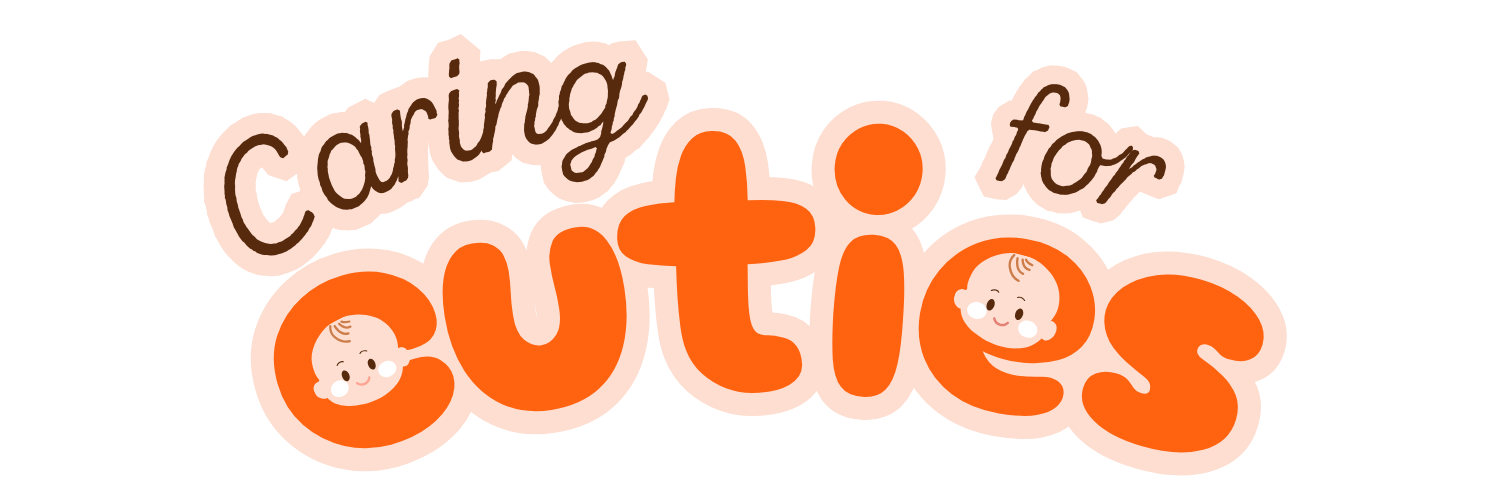A balanced diet plays a vital role in shaping the health and growth of children. During their school-age years, kids experience rapid physical, cognitive, and emotional development. Ensuring they receive the right nutrients can set the foundation for a healthier future.
Many children in the U.S. face deficiencies in essential nutrients like calcium, magnesium, potassium, and fiber. These gaps can impact their overall well-being. A well-rounded diet not only addresses these issues but also supports long-term health outcomes.
In this article, we’ll explore five key health benefits linked to proper nutrition. From boosting immunity to enhancing brain function, the right diet can make a significant difference. Combining healthy eating with physical activity ensures holistic development for kids.
Key Takeaways
- A balanced diet supports physical, cognitive, and emotional growth in children.
- Common nutrient deficiencies can be addressed with the right foods.
- Proper nutrition during school-age years promotes long-term health.
- Healthy eating and physical activity work together for overall well-being.
- Five key health benefits of a nutritious diet will be discussed in detail.
Introduction: The Importance of Nutrition for School-Age Children
Between ages 6 and 12, kids form habits that can last a lifetime. This period is crucial for establishing healthy dietary patterns that influence their growth and overall well-being. What they eat now can shape their future health in profound ways.
Why Nutrition Matters During the School Years
During these formative years, children are heavily influenced by their surroundings. Family, peers, and media all play a role in shaping their food choices. For example, after-school snacks alone can provide up to 25% of their daily calories. Ensuring these snacks are nutritious is key.
Nutrient deficiencies, such as low levels of calcium, magnesium, and potassium, are common concerns. These gaps can affect their physical and mental development. Addressing these issues early helps set the stage for a healthier future.
How Nutrition Shapes Long-Term Health
Regular meal times and family dining are powerful tools for modeling healthy behaviors. When kids see their parents making good food choices, they’re more likely to follow suit. This creates a positive cycle that reinforces healthy habits.
Picky eating is another challenge that needs attention. Addressing it early can prevent long-term issues and ensure kids get the nutrients they need. By focusing on balanced meals and positive reinforcement, parents can help their children develop a healthy relationship with food.
1. Enhanced Physical Growth and Development
The right foods during early years can significantly impact a child’s physical development. Essential nutrients like protein and calcium play a crucial role in building strong muscles and bones. A balanced diet ensures kids grow at a healthy pace and maintain a proper weight.

The Role of Protein and Calcium in Growth
Protein is the building block of muscles, while calcium strengthens bones. Foods like yogurt, cheese, and turkey sandwiches are excellent sources. Fortified cereals also provide these essential nutrients, making them a great addition to meals.
How Balanced Meals Support Healthy Weight
Portion control is key to preventing childhood obesity. The USDA recommends specific serving sizes for school-age kids to ensure they get the right amount of nutrients without overeating. Avoiding excessive processed foods and sugary snacks is equally important.
- Protein builds muscle and supports overall growth.
- Calcium-rich dairy products strengthen bones.
- Portion control helps maintain a healthy weight.
- Limit processed foods and sugary snacks.
2. Improved Cognitive Function and Academic Performance
Fueling a child’s brain with the right foods can lead to sharper focus and better grades. The connection between diet and cognitive function is undeniable. Certain nutrients are essential for brain health, while skipping meals like breakfast can hinder academic success.
Nutrients That Boost Brain Power
Omega-3 fatty acids, found in fish like salmon, support memory and learning. Iron, present in lean meats and beans, helps with concentration. Antioxidants from berries protect brain cells and improve mental clarity. Including these in a child’s diet can make a noticeable difference in their performance at school.
Whole grains are another key component. They provide glucose, the brain’s primary energy source. This helps kids stay focused during classes and retain information better. A balanced intake of these nutrients ensures optimal brain function.
The Link Between Breakfast and School Success
Studies show that children who eat breakfast perform better on tests. A morning meal provides the energy needed for mental and physical activity. Quick options like peanut butter sandwiches or fresh fruit are easy to prepare and offer sustained energy.
Johns Hopkins recommends simple, on-the-run breakfasts like bagels with cream cheese or toast with avocado. These meals are both nutritious and convenient. On the other hand, sugary cereals can cause energy crashes, making it harder for kids to concentrate.
- Omega-3s in fish enhance memory and learning.
- Iron from lean meats improves focus.
- Antioxidants in berries protect brain cells.
- Whole grains provide steady energy for focus.
- Balanced breakfasts lead to better test scores.
3. Strengthened Immune System
A strong immune system is essential for keeping kids active and healthy. The right mix of vitamins and nutrients can help their bodies fight off infections and stay resilient. From vitamin C to zinc, these elements play a vital role in boosting immunity.

Key Vitamins and Minerals for Immunity
Vitamin C, found in citrus fruits like oranges, supports the body’s defense system. Zinc, present in nuts and seeds, helps reduce the duration of colds. Probiotics in yogurt promote gut health, which is closely linked to immunity. Vitamin D from dairy products like milk strengthens the body’s ability to fight infections.
Iron, found in spinach and lean meats, is another critical nutrient. It helps produce white blood cells, which are essential for fighting off illnesses. Including these nutrients in daily meals ensures kids stay healthy and active.
How Healthy Snacks Keep Kids Healthy
After-school snacks can be a great way to boost immunity. Carrot sticks with hummus, oranges, or trail mix are excellent choices. These healthy snacks provide energy and essential vitamins without causing energy slumps.
Hydration also plays a key role. Water helps flush out toxins and keeps the body functioning properly. Limit sugary drinks like juice to 8 ounces a day for kids aged 7-18, as recommended by the AAP.
- Vitamin D in milk reduces infection risks.
- Iron from spinach supports white blood cell production.
- Immune-boosting snacks include carrots with hummus and oranges.
- Hydration helps flush toxins and maintain health.
- A strong immune system leads to fewer school absences.
4. Better Eating Habits for Life
Building lifelong healthy habits starts with the choices kids make today. Teaching them to explore diverse foods and make smart decisions can shape their future well-being. Early exposure to a variety of flavors and textures encourages curiosity and openness to new experiences.
Teaching Kids to Make Healthy Food Choices
Involving kids in meal planning increases their willingness to try new foods. Let them pick a new vegetable each week or assemble their own wraps. This hands-on approach makes healthy eating fun and engaging.
MyPlate’s colorful variety of vegetables encourages exploration. Kids are more likely to eat what they help prepare. This strategy also teaches portion control and balanced meals.
The Role of Family Meals in Developing Good Habits
Consistent meal times without screens create a positive environment. Family dinners model balanced eating and reinforce healthy habits. These moments also provide opportunities to discuss the importance of good food choices.
Busy schedules can be a challenge, but prep-ahead freezer meals save time. Positive food environments reduce the risk of eating disorders and promote lifelong well-being.
- Involve kids in meal planning to encourage exploration.
- Use MyPlate’s variety to make meals colorful and appealing.
- Set consistent meal times without distractions.
- Model balanced eating during family meals.
- Prepare freezer meals to save time on busy days.
5. Increased Energy and Physical Activity
Active kids need the right fuel to stay energized and engaged throughout the day. A balanced diet provides the nutrients necessary for sustained energy and supports their physical activity. Whether they’re playing sports or running around with friends, the right foods can make all the difference.
How Nutrition Fuels Active Lifestyles
Complex carbohydrates, like oatmeal and whole grains, offer lasting energy compared to sugary snacks. These foods release glucose slowly, keeping kids fueled for longer periods. Pre-activity snacks, such as a banana with almond butter or whole-grain crackers, are excellent choices to maintain stamina.
Kids need at least 60 minutes of daily physical activity. The right diet ensures they have the energy to meet this goal. Including lean proteins, healthy fats, and fiber-rich foods in meals helps them stay active and focused.
The Importance of Hydration for Energy
Hydration plays a crucial role in maintaining energy levels. Water is the best choice for kids, especially during sports or outdoor play. Sugary drinks can lead to energy crashes and should be limited.
Signs of dehydration include fatigue, dizziness, and dark urine. Encouraging kids to carry reusable water bottles to school ensures they stay hydrated throughout the day. This simple habit can boost their performance in both academics and sports.
- Complex carbs like oatmeal provide steady energy.
- Pre-activity snacks include bananas with almond butter or whole-grain crackers.
- Signs of dehydration: fatigue, dizziness, dark urine.
- Reusable water bottles are essential for school and sports.
- Proper hydration supports sustained physical activity.
Practical Tips for Implementing Healthy Nutrition
Healthy eating habits start with simple, actionable steps that kids can enjoy. By focusing on balanced meals, creative snacks, and involving kids in the process, parents can make nutrition a fun and engaging part of daily life.
Creating Balanced Meals with MyPlate
MyPlate is a helpful tool for planning meals that include all essential food groups. It recommends filling half the plate with fruits and vegetables, one-quarter with grains (mostly whole), and one-quarter with protein. This ensures kids get the variety they need for growth and energy.
Here’s a breakdown of daily portions for school-age kids:
| Food Group | Daily Portion |
|---|---|
| Grains | 5 ounces |
| Vegetables | 2.5 cups |
| Fruits | 1.5 cups |
| Protein | 4 ounces |
| Dairy | 2.5 cups |
These guidelines help parents create meals that are both nutritious and appealing.
Healthy Snack Ideas for School-Age Kids
Snacks are a great way to boost energy and provide essential nutrients. Here’s a 7-day plan for healthy snacks:
- Monday: Apple slices with cheese
- Tuesday: Celery sticks with peanut butter
- Wednesday: Yogurt with berries
- Thursday: Whole-grain crackers with hummus
- Friday: Carrot sticks with ranch dip
- Saturday: Trail mix with nuts and dried fruit
- Sunday: Smoothie with spinach and banana
These options are easy to prepare and align with USDA recommendations.
Involving Kids in Meal Planning and Preparation
Getting kids involved in the kitchen encourages them to make better food choices. Simple tasks like washing produce, stirring batter, or packing lunches can make them feel included. Themed dinners, like Taco Tuesdays, add an element of fun and creativity.
Be cautious of “health halo” snacks, such as granola bars with added sugars. Reading labels and choosing whole, minimally processed options ensures kids get the best nutrition.
By following these tips, parents can create a positive food environment that supports their child’s growth and development.
How to Handle Picky Eaters
Picky eating is a common challenge, but there are ways to make it easier. Many parents struggle to introduce new healthy foods to their child. With patience and creativity, you can help them develop better habits and enjoy a variety of meals.
Strategies for Encouraging Healthy Eating
Johns Hopkins suggests letting kids choose between two healthy options. This empowers them and reduces resistance. For example, ask, “Would you like carrots or broccoli with dinner?”
Another effective method is offering “no-pressure” tasting sessions. Let them try small portions of new foods without forcing them to finish. Praise their effort, even if they only take one bite. For instance, say, “Great job trying broccoli!”
Here are some additional tips:
- Create rainbow plates with colorful bell peppers, berries, and cherry tomatoes.
- Hide veggies in smoothies or pasta sauces for a sneaky nutrient boost.
- Share success stories of gradual food acceptance to inspire them.
Making Healthy Foods Fun and Appealing
Presentation matters when it comes to healthy foods. Use cookie cutters to shape fruits and vegetables into fun designs. Kids are more likely to eat something that looks exciting.
Involve them in meal prep. Let them wash produce, stir ingredients, or assemble their own wraps. This hands-on approach makes them feel included and more willing to try new things.
Here’s a table of creative ideas to make meals more appealing:
| Food | Creative Idea |
|---|---|
| Fruits | Make fruit kebabs with colorful berries and melon. |
| Vegetables | Serve veggie sticks with a fun dip like hummus or yogurt. |
| Dairy | Create yogurt parfaits with layers of granola and fresh fruit. |
By using these strategies, you can turn mealtime into a positive experience. Encouraging kids to explore new flavors helps them build lifelong habits and enjoy a balanced diet.
The Role of Physical Activity in Nutrition
Physical activity and proper nutrition go hand in hand for a child’s well-being. Staying active helps the body absorb nutrients more effectively and supports overall health. When kids combine exercise with balanced meals, they’re better equipped to grow, learn, and thrive.
Combining Nutrition and Exercise for Optimal Health
Exercise boosts metabolism, making it easier for the body to process vitamins and minerals. After activities like biking or dancing, snacks like chocolate milk provide protein and calcium to refuel muscles and bones. This combination ensures kids stay energized and healthy.
Prolonged sitting can lead to conditions like obesity and poor posture. Encouraging kids to move throughout the day reduces these risks. Outdoor play also helps with vitamin D synthesis, which improves mood and strengthens bones.
Tips for Reducing Screen Time and Increasing Activity
Limiting screen time to less than two hours a day is crucial. Replace sedentary habits with fun alternatives like family walks, obstacle courses, or yoga. These activities not only keep kids moving but also create bonding opportunities.
Here are some creative ways to encourage physical activity:
- Organize scavenger hunts in the backyard or park.
- Try dance-offs or mini sports tournaments at home.
- Encourage kids to help with gardening or outdoor chores.
By making movement a daily habit, parents can help their child develop a love for an active lifestyle. This sets the stage for lifelong health and happiness.
Understanding Nutritional Guidelines for School-Age Kids
Many children miss out on key nutrients needed for their development. The USDA reports low intake of calcium, magnesium, potassium, and fiber in kids’ diets. Following dietary guidelines can help bridge these gaps and support their growth.
Key Nutrients Often Missing in Kids’ Diets
Certain nutrients are frequently lacking in children’s meals. For example, calcium is essential for strong bones, yet many kids don’t get enough. Magnesium, found in almonds, supports muscle function, while fiber from beans aids digestion. Iron, present in spinach, is crucial for energy levels.
Here’s a quick guide to common nutrient gaps and solutions:
- Calcium: 1,000 mg daily for ages 4-8. Include milk, cheese, and yogurt.
- Magnesium: Almonds, whole grains, and leafy greens.
- Fiber: Beans, lentils, and whole-grain products.
- Iron: Spinach, lean meats, and fortified cereals.
How to Follow Dietary Recommendations
Meeting daily dietary needs doesn’t have to be complicated. MyPlate.gov offers age-specific meal plans to help parents create balanced meals. Avoid “empty calories” from soda and chips, which provide little nutritional value.
Here’s a sample day’s menu that meets USDA standards:
| Meal | Food |
|---|---|
| Breakfast | Oatmeal with berries and a glass of milk |
| Lunch | Turkey sandwich on whole-grain bread, carrot sticks, and an apple |
| Snack | Yogurt with almonds |
| Dinner | Grilled chicken, quinoa, and steamed broccoli |
For personalized tools and tips, parents can visit ChooseMyPlate.gov. This resource helps families make informed dietary choices and ensures kids get the nutrients they need.
Conclusion: Building a Foundation for Lifelong Health
Establishing healthy habits early sets the stage for a brighter future. From enhanced physical growth to improved cognitive function, the benefits of a balanced diet are clear. A strong immune system, better eating routines, and increased energy are just a few of the positive outcomes tied to proper nutrition.
Parents play a key role in modeling these behaviors. Consistency and creativity in meal planning can make a big difference. Consulting a pediatrician for personalized advice ensures your children get the support they need.
The long-term payoff is undeniable. Kids who develop healthy habits grow into resilient, thriving adults. Start small—swap one snack this week and take the first step toward a healthier future for your school-age children.









